March 1st, 2017
by Yukiko Matsuoka

The ocean is a precious natural resource. According to the U.S. Geological Survey, water covers 68.5% of the Earth's surface. Beyond providing food and water, the ocean offers invaluable resources for recreation, absorbs carbon dioxide from the atmosphere, and supplies oxygen—all vital functions. The Blue Flag certification,reviewed annually bythe Foundation for Environmental Education (FEE), is the most widely recognized environmental accreditation standard. Beaches, marinas, and boating tourism businesses are assessed against the highest certification standards, evaluated from perspectives including water quality and safety, comfort, cleanliness, environmental management, education, and information provision.
Established in France in 1987, the program expanded beyond Europe after 2001.
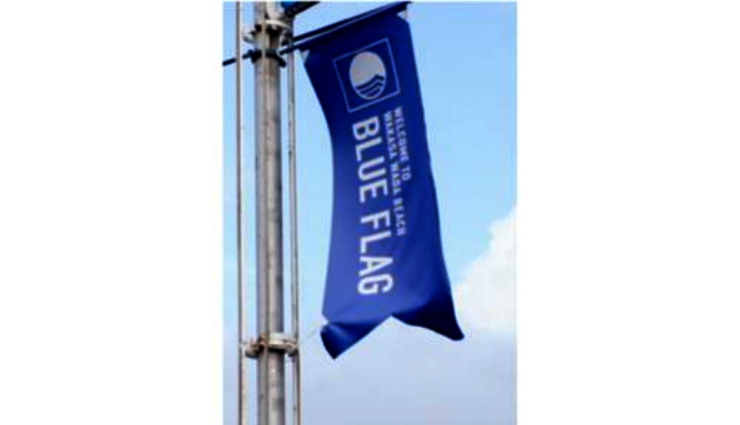
Certified regions are announced annually. In 2016, 4,266 beach and sailing port tourism operators across 47 countries received certification.
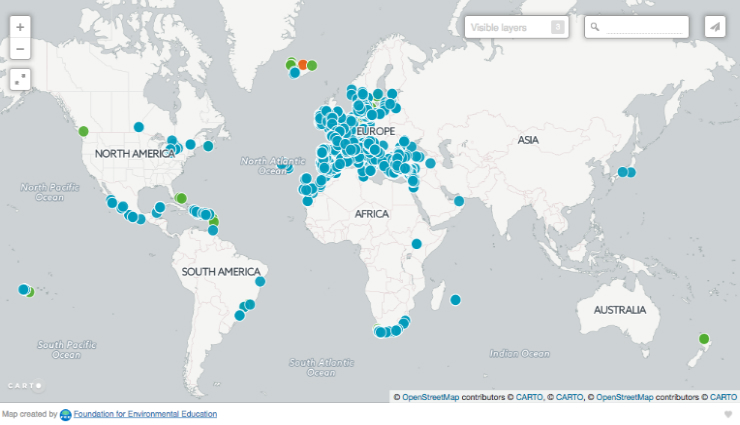
Wakasa Wada Beach in Takahama Town,located at the westernmost tip of Fukui Prefecture, became the first beach in Asia to receive Blue Flag certification in April 2016.
It is also renowned as one of Japan's Top 100 Beaches.
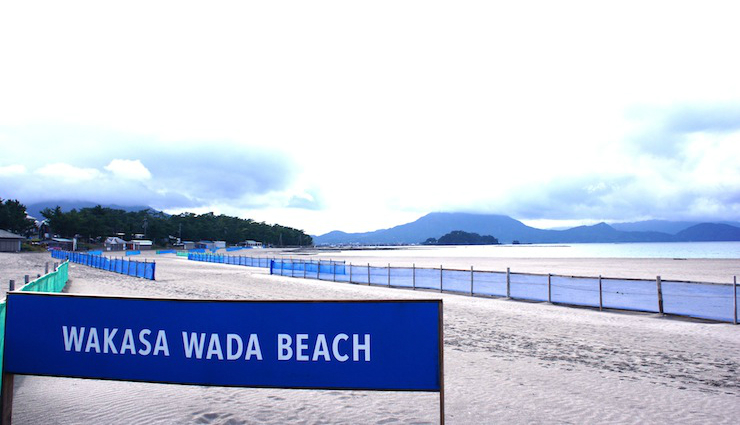
This beach is one of eight beaches in Takahama Town along the 8-kilometer coastline of Wakasa Bay, characterized by white sand and green pines. Thanks to its unique topography that prevents large-scale rainwater runoff and a meticulously managed drainage system, the seawater remains exceptionally clean, boasting the highest water quality standards.
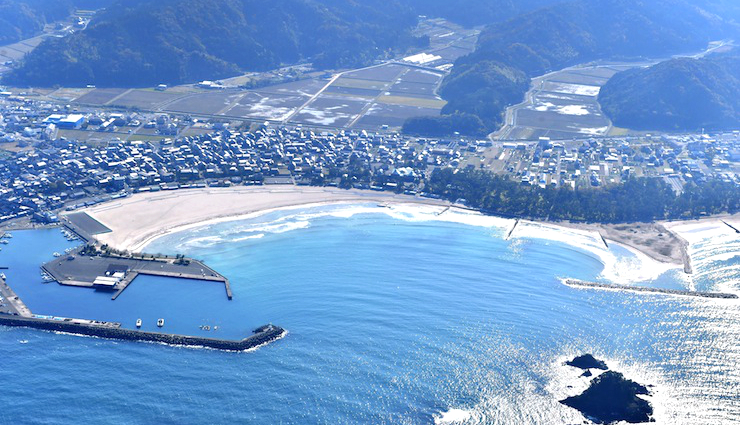
The coastal waters of Takahama Town boast abundant fishing grounds along the Sea of Japan, yielding mackerel and squid, spring needlefish, and winter pufferfish and crab. Since the 6th century, fishing has been the primary industry. Particularly renowned is the red sea bream, known locally as Wakasa-buri, celebrated as a premium ingredient in Japanese cuisine.
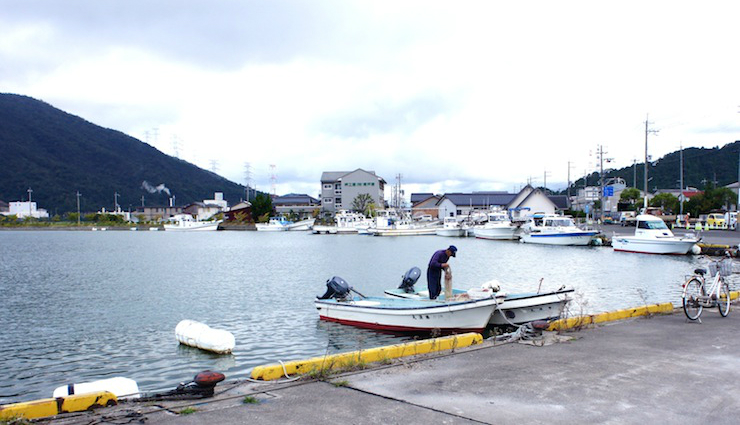
Since the early 20th century, Takahama Town's beaches have been immensely popular during summer, generating significant revenue for the local tourism industry. At its peak, the beaches attracted up to 1.5 million visitors primarily from the Kansai region, supported by over 500 guesthouse operators. However, visitor numbers have since declined to around 250,000. Many guesthouses have closed. It has become difficult for local businesses to maintain and manage the beautiful beaches.

The Blue Flag is like a milestone toward a self-sustaining beach. Local stakeholders, such as residents, business owners, the municipality, and the tourism bureau, are collaboratively working so that the Wakasa Wada beach may meet the criteria of the Blue Flag for beaches. Local people and tourists are voluntarily cleaning the beach. Environmental education programs are provided for local kids in order to raise eco-friendly awareness.
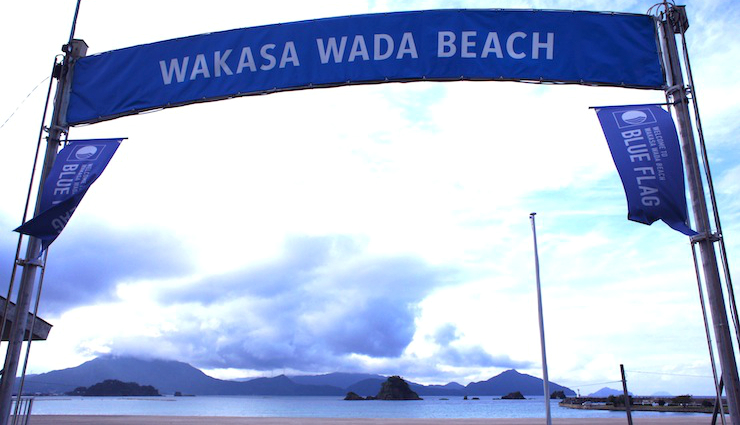
According to the the researchers report in Science, about 4.8 million to 12.7 million metric tons of plastic washed offshore in 2010 alone, or about 1.5% to 4.5% of the world’s total plastic production. Undoubtedly, oceans are valuable natural resources not for us, but for future generations. The Wakasa Wada beach steps ahead toward a clean, sustainable and environmentally friendly beach for tomorrow.
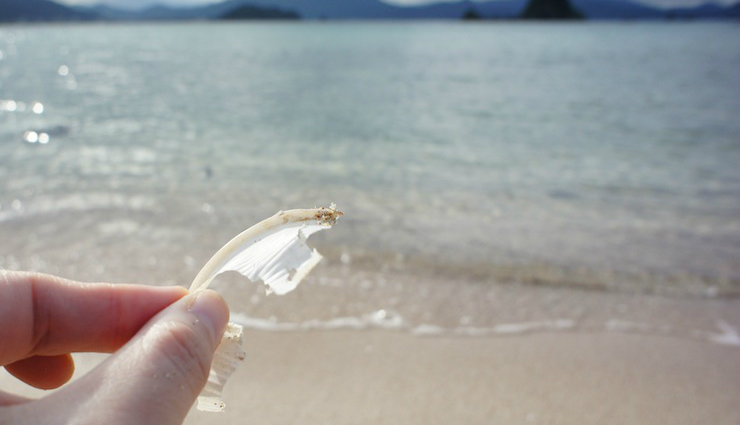
【抄訳】
海は、貴重な天然資源であり、アメリカ地質調査所によると、地球上に存在する水の68.5%を占めています。食料や水、余暇のための大切な資源をもたらしているのみならず、大気中から二酸化炭素を吸収し、酸素を供給する重要な役割もになっています。
ブルーフラッグは、国際環境教育基金(FEE)が毎年、審査を行う、最もよく知られた環境認証で、ビーチやヨットハーバー、船観光事業者を対象に、水質や安全性、快適さ、清潔さ、環境マネジメント、教育、情報といった観点で、高い水準を満たしていることを認めるものです。1987年にフランスで創設され、2001年以降、欧州以外の地域にも拡大されました。
認証される地域は、毎年、発表されます。2016年には、47カ国4,266カ所のビーチやヨットハーバー、船観光事業者が認証を受けています。
福井県最西端・高浜町の若狭和田ビーチは、2016年4月、アジアで初めて、ブルーフラッグの認証を受けました。ここは、日本の快水浴場百選のひとつとしても知られています。
このビーチは、8キロメートルにわたる白砂青松な若狭湾の海岸線にある高浜町の8つのビーチのひとつです。雨水が大量に流れ込まない独特の地形と管理の行き届いた下水システムのおかげで、海水は非常にきれいで、最上級の水質を誇っています。
高浜町では、鯖やイカ、春のサヨリ、冬のフグやカニなど、日本海の海岸に沿って豊富な漁場を有することから、6世紀以降、漁業が主要な産業となっています。特に、若狭ぐじと呼ばれる赤鯛は、和食の高級食材として知られています。
高浜町は、20世紀初頭以降、夏の海水浴場として人気を集め、地元の観光産業に大きな利益をもたらしました。ピーク時には、主に関西方面から、150万人が高浜町のビーチを訪れ、500カ所以上の民宿が営業していました。しかし、観光客数は減り、今では年感25万人程度に落ち込んでいます。多くの民宿は廃業しました。地元の事業者が美しいビーチを維持管理していくことは難しくなっています。
ブルーフラッグは、自立したビーチに向けた里程標のようなものです。地域住民や事業主、地方自治体、観光協会など、地元の利害関係者が協力し、若狭和田ビーチがブルーフラッグの基準を満たすよう、尽力しています。地元住民や観光客がボランティアでビーチを清掃したり、環境意識を高めるべく、地元の子どもに向けた環境教育プログラムを実施しています。
サイエンス誌の研究レポートによると、2010年だけで、世界のプラスチック生産量の1.5〜4.5%にあたる480万トンから1,270万トンものプラスチックが海に流出しています。いわずもがな、海は、私たちだけでなく、次世代にとっても、貴重な天然資源。若狭和田ビーチは、将来に向けた、清潔で持続可能な環境にやさしいビーチへ、一歩先を歩み始めています。